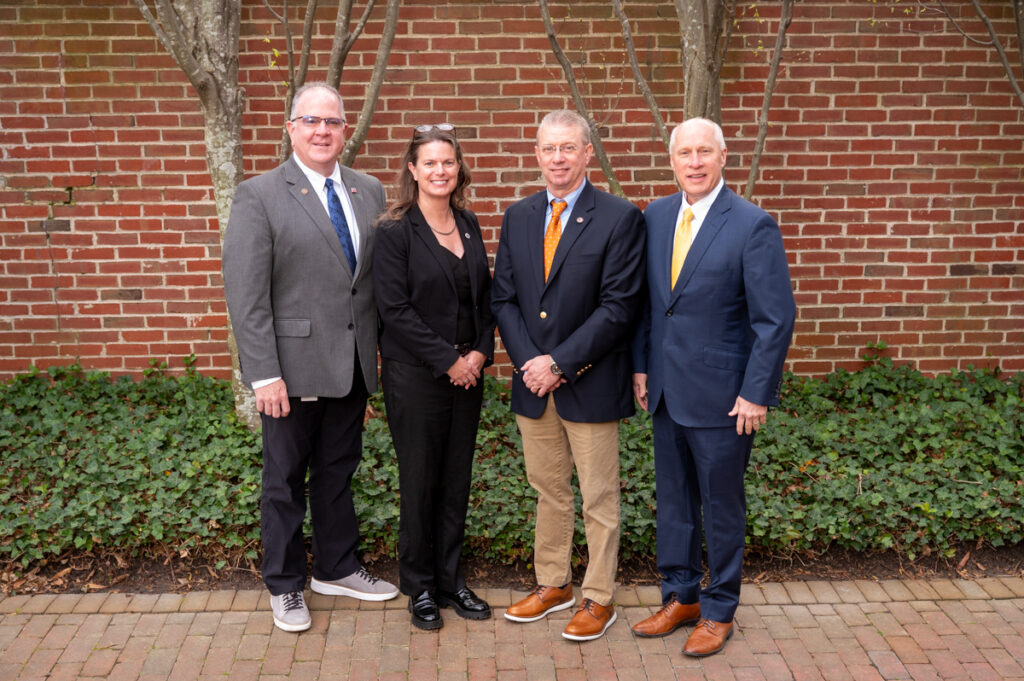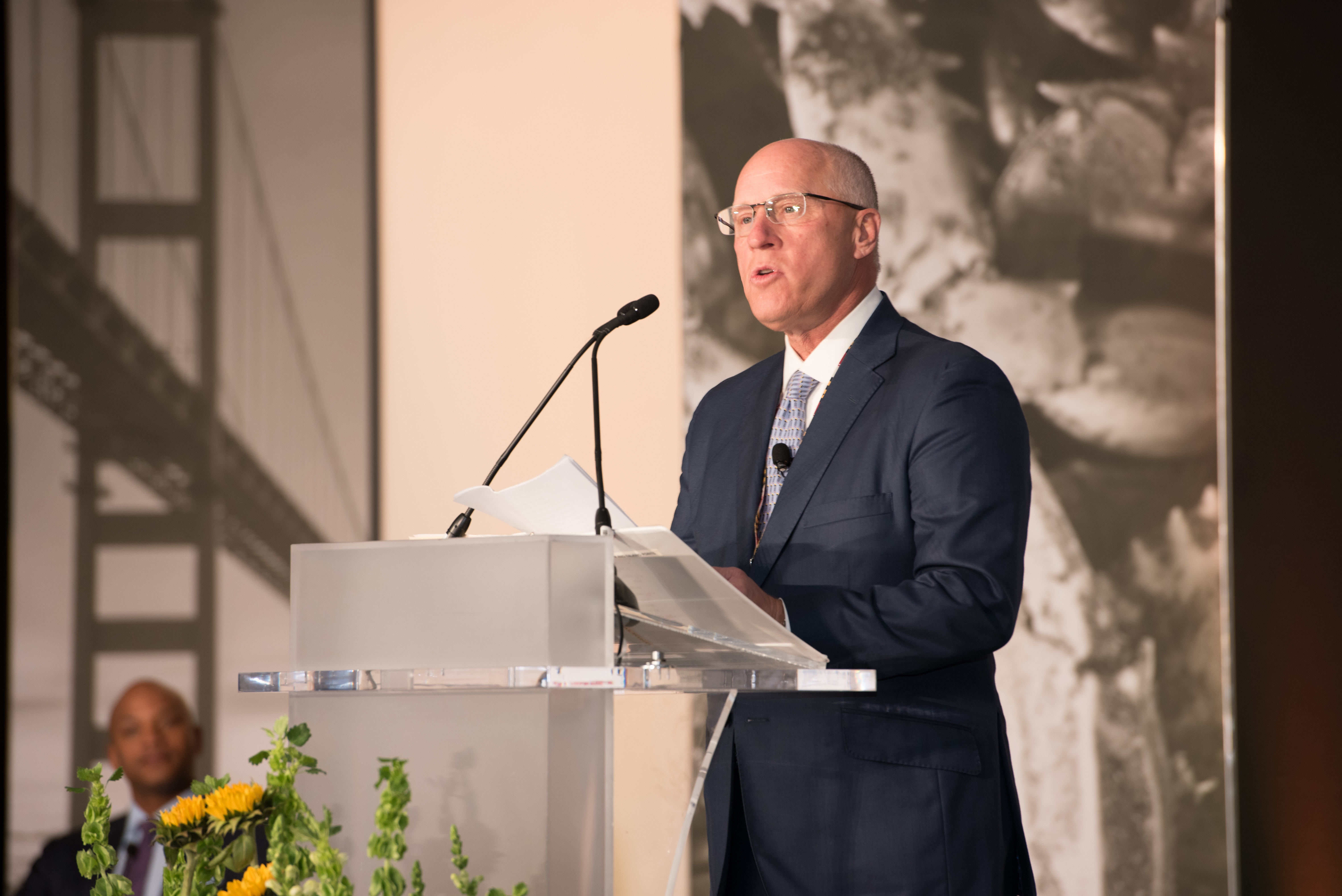
After more than two decades of planning, hope, and persistent effort, a long-awaited vision is finally becoming reality on the Eastern Shore. Rising steadily just off Route 50 in Easton is the future of rural healthcare: the University of Maryland Shore Regional Medical Center, a state-of-the-art facility poised to transform health services for Maryland’s Mid-Shore region.

For Ken Kozel, President and CEO of University of Maryland Shore Regional Health, the construction is more than just a hospital project. It’s a promise kept.
“This new Regional Medical Center is the anchor for inpatient healthcare in our five-county region,” Kozel says. “It’s about access, quality, and creating a sustainable model of care for rural communities — not just for today, but for decades to come.”
A Vision Realized Through Partnership
University of Maryland Shore Regional Health, a member organization of the University of Maryland Medical System (UMMS), serves Caroline, Dorchester, Kent, Queen Anne’s, and Talbot counties — and it does so as the sole provider of comprehensive healthcare services in the area.
But bringing a Regional Medical Center to life has taken more than vision — it’s taken deep and meaningful collaboration. Local government and civic organizations have played a vital role in helping to move the project forward.
“Our partnerships with the Talbot County Council, the Easton Town Council, Easton Utilities, and others have been absolutely critical,” Kozel said. “Without their support — and without the commitment of past councils who held us accountable and believed in this project — we wouldn’t be where we are today.”

It was with the endorsement and backing of these local bodies that Shore Regional Health filed the necessary Certificate of Need, coordinated land use, and began major infrastructure adjustments, including the relocation of Route 662 to accommodate the facility.
A Model for the Future
Across the United States, rural hospitals are closing at alarming rates. Economic pressures, staffing shortages, and outdated infrastructure have all taken their toll. But Shore Regional Health is taking a different approach.
“We can’t sustain a hospital in every small town anymore,” Kozel explains. “What we’ve built is a regional, integrated delivery system. The new Medical Center will serve as the hub for inpatient care, supported by outpatient facilities, urgent care centers, and diagnostics throughout the region.”
This model is already being recognized as a national example of how rural healthcare can be both sustainable and high quality — if it’s designed with intention.
The Easton facility’s central location, directly off Route 50, was chosen specifically to provide easy access to all five Mid-Shore counties.
Where the Project Stands Today

Construction of the new medical center officially began in 2024. Over the past year, extensive site preparation work has been underway — including the relocation of Route 662. That phase is nearly complete, with the newly aligned road expected to reopen by early summer 2025.
“Once that’s done,” Kozel says, “we’ll begin vertical construction. That’s when the community will start to really see the hospital take shape.”
If all goes according to plan, construction will be completed by February 2028, with an opening scheduled for summer 2028. The months between will be spent installing and testing equipment, preparing staff, and ensuring a seamless transition from the existing Easton hospital.
“Moving a hospital is no small feat,” Kozel says with a smile. “It’s a deeply coordinated process involving nursing staff, EMS, and support teams. But we’ve done it before, and we’ll be ready.”
Investing in People, Not Just Infrastructure

While the facility itself is groundbreaking, Kozel is quick to remind people that it’s the people inside who will make the real difference.
“We have 2,000 employees, over 400 medical staff members, and more than 400 volunteers,” he said. “This is their hospital. They’ve been instrumental in shaping our vision, and they’ll be the heartbeat of this new center.”
That pride and ownership run deep. From physicians and nurses to environmental services staff and volunteers, the entire team sees the new facility not just as a workplace, but as a symbol of commitment to the community.
A Catalyst for Economic and Community Health
The community impact of the new Regional Medical Center extends beyond healthcare. It is expected to serve as a powerful economic engine for Talbot County and the broader Mid-Shore area.
“Healthcare drives population growth, workforce development, and quality of life,” Kozel says. “When families and businesses consider moving to the area, having a top-tier hospital makes a real difference. This project ensures our community’s long-term vitality — medically and economically.”
Honoring the Past, Building the Future

For Kozel and the many others who have championed this project, the journey to 2028 is as much about legacy as it is about innovation.
“We wouldn’t be here without the past leaders — local officials, hospital staff, community advocates — who kept this project alive and made sure it stayed on the radar,” Kozel said. “Their dedication paved the way for this moment.”
As steel begins to rise from the Easton landscape, it’s clear that the new University of Maryland Shore Regional Medical Center represents something far greater than a building. It’s the embodiment of collaboration, perseverance, and belief in a healthier future for the Mid-Shore.
“This is more than a hospital,” Kozel says. “It’s a lifeline. And it’s going to be here for generations.”
About Talbot County Department of Economic Development and Tourism
The Talbot County Department of Economic Development and Tourism’s mission is to enhance and promote a business-friendly environment for current and prospective enterprises and to advocate for policies that support and strengthen the economic vitality of Talbot County. The department’s vision for Talbot County is built on the principles of strong communities, empowered businesses, and innovative solutions.
Never Miss Talbot County Business News:
Subscribe to the Talbot Works newsletter here.
Wait! Before You Go!
Don’t forget to Explore Talbot County with us here.
